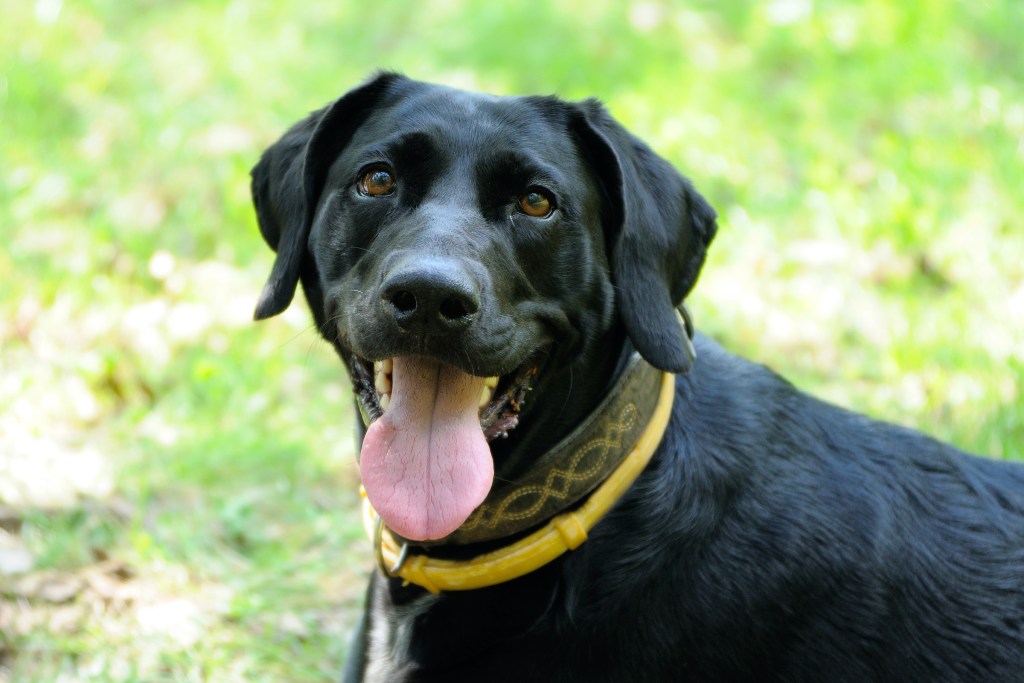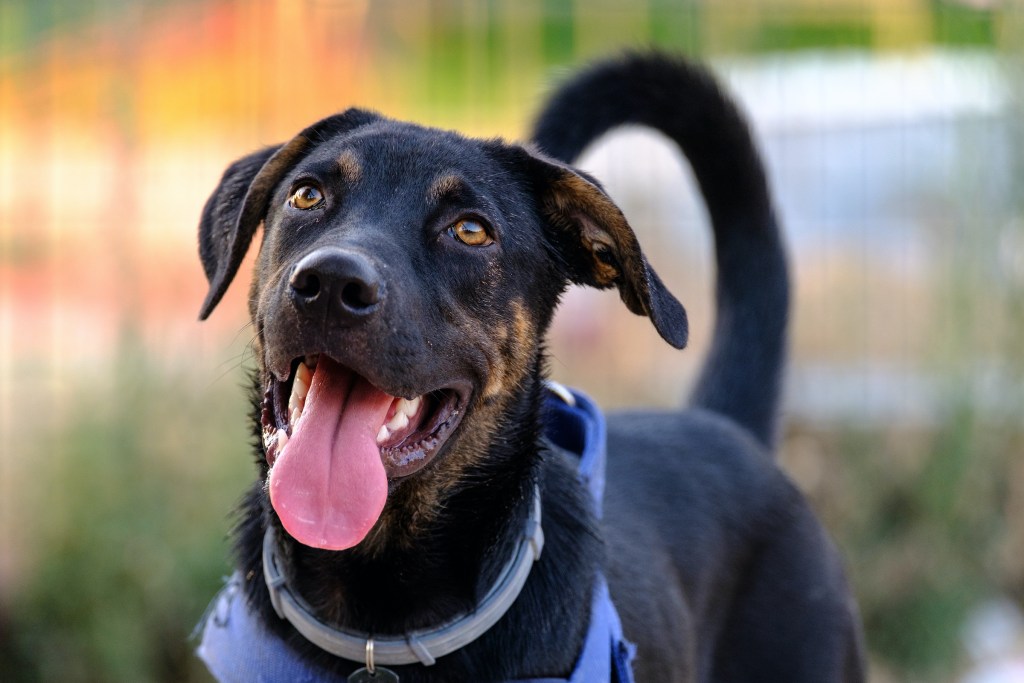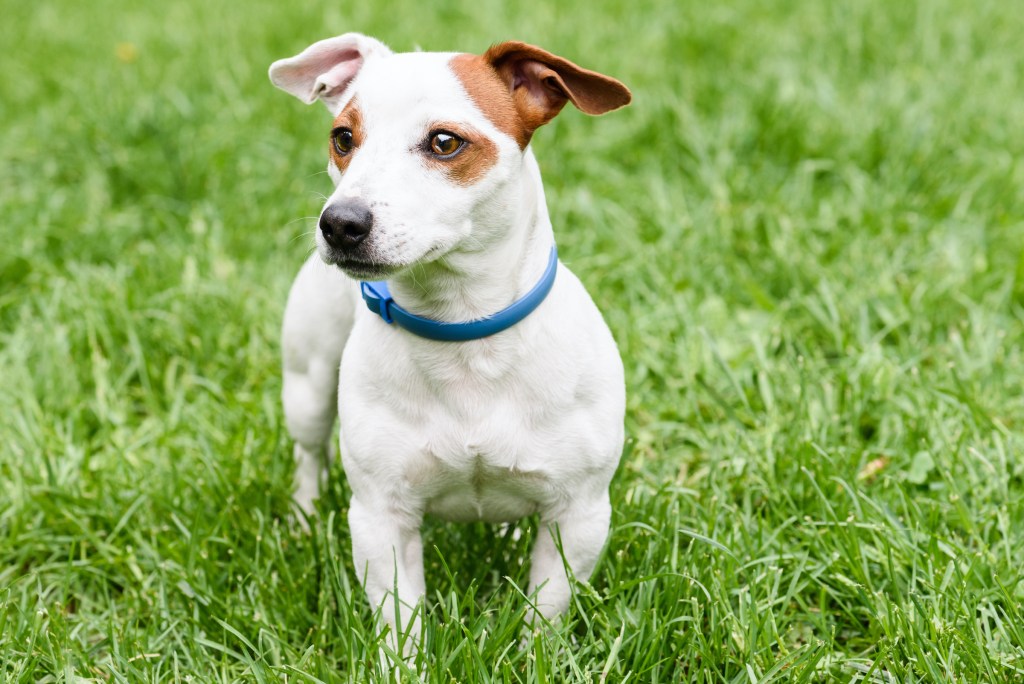No matter what breed or age your dog is, it’s important to keep him protected from fleas. They’re itchy, they travel fast, and are a surefire way to create chaos in any household. Here’s the catch: Many popular flea prevention methods are not safe for puppies.
If you’ve found yourself Googling “can puppies wear flea collars” — search no more — we have the answers for you here. We’ll review what a flea collar is, whether flea collars are safe for puppies, and what flea prevention methods are most useful (and safe!) for your growing fur baby. After just a little research, you’ll know exactly how to keep your puppy flea-free — for good!

What is a flea collar? How does it protect my dog from fleas?
Flea collars are one preventive method of keeping pets free of fleas (and sometimes ticks). These collars are made of plastic and contain insecticides and pesticides such as tetrachlorvinphos, propoxur, and flumethrin, among others. The purpose of these chemicals is to kill and repel bugs, though 2020 reports from the Center for Biological Diversity suggest that the two chemicals found in Seresto collars — flumethrin and imidacloprid — may be harmful to pets. At this time, though, the U.S. Environmental Protection Agency has not issued a warning or recall for these items.
In 2021, though, Canada passed a Special Review Decision that included the amendment and cancellation of many flea prevention products, including some Hartz Ultraguard products. As for Seresto, the product has never been allowed in the country. According to an opening statement from Congressional Chairman Raja Krishnamoorthi, “in 2016, Canada’s Pest Management Regulatory Agency (PMRA) concluded — based on a review of the same American data available to the EPA — that the collar posed too great a risk to pets and their owners to be sold in Canada. Therefore, Seresto has never been allowed in Canada.”

Are flea collars safe for puppies? How old does a dog need to be to wear a flea collar?
Because puppies are so sensitive in general, and because flea collars typically contain a larger amount of their respective pesticides (enough to be released over weeks or months at a time), they are not safe for young puppies. This is also why flea collars come in different sizes: Different-sized bodies need a different amount of chemicals — just enough to keep them protected without making them sick themselves.
Some collars meant for younger dogs use a chemical that’s less toxic to pups, but your dog is being exposed to pesticides nonetheless. Dogs are considered old enough to wear a flea collar at around 7 or 8 weeks, notes the AKC, though the exact age varies from product to product.

How to keep your puppy flea-free without the help of a flea collar
Since vets and animal experts don’t recommend using flea products like collars and shampoos on young puppies (or, in some cases, at all), you can opt for a regular brush-through with a flea comb instead. This will help you find any fleas that may be hidden in your dog’s fur. Use your comb to gently remove any fleas you do find so an infestation doesn’t become an issue.
According to the American Kennel Club, flea treatment medications — not preventive medication — can be safe for younger pups. Capstar, for example, is approved for puppies 4 weeks of age and older. Still, you should let your dog’s veterinarian know before starting your pup on any new medication — especially something strong like a flea treatment.
It’s also important to treat your home and yard for any kind of flea infestation. Don’t forget to vacuum all carpets and wash any fabric surfaces your dog may have touched.

Alternatives to flea collars: Chewables, topicals, and more
Once your puppy reaches a few months of age, your flea prevention options will grow immensely. Talk to your vet if you’re tempted to start your pup on a flea collar; they can advise you about any other available flea treatments, including oral medications and topical ointments.
Frontline Plus is just one popular flea treatment that’s applied directly to your dog’s skin. Once a month, squeeze out the contents of one capsule onto your dog’s skin between the shoulder blades. As a plus, it also protects against ticks and flea larvae, which can be major problems on their own. NexGard is a well-known oral flea and tick medication that many vets recommend. It’s also taken once a month and is beef flavored for your dog’s enjoyment.
No matter how old your puppy is, you’re doing the right thing by thinking about flea prevention so early on. This gives you plenty of time to consider your options as well as your dog’s health and his environment, all essential factors in staying pest-free. When you’re on top of things early, you can nearly guarantee a healthy, no-itch life for everyone in your house, whether they have two legs or four.



